Islamic history is not something which we learn a lot of in Western countries. Despite knowing a lot about the history of the Muslim faith and people, there’s nothing quite like going to the places where certain events took place. Spending three days in Madinah was the perfect way to do that, although I’m not sure that any length of time would have been sufficient to take in the city’s peaceful wonder.
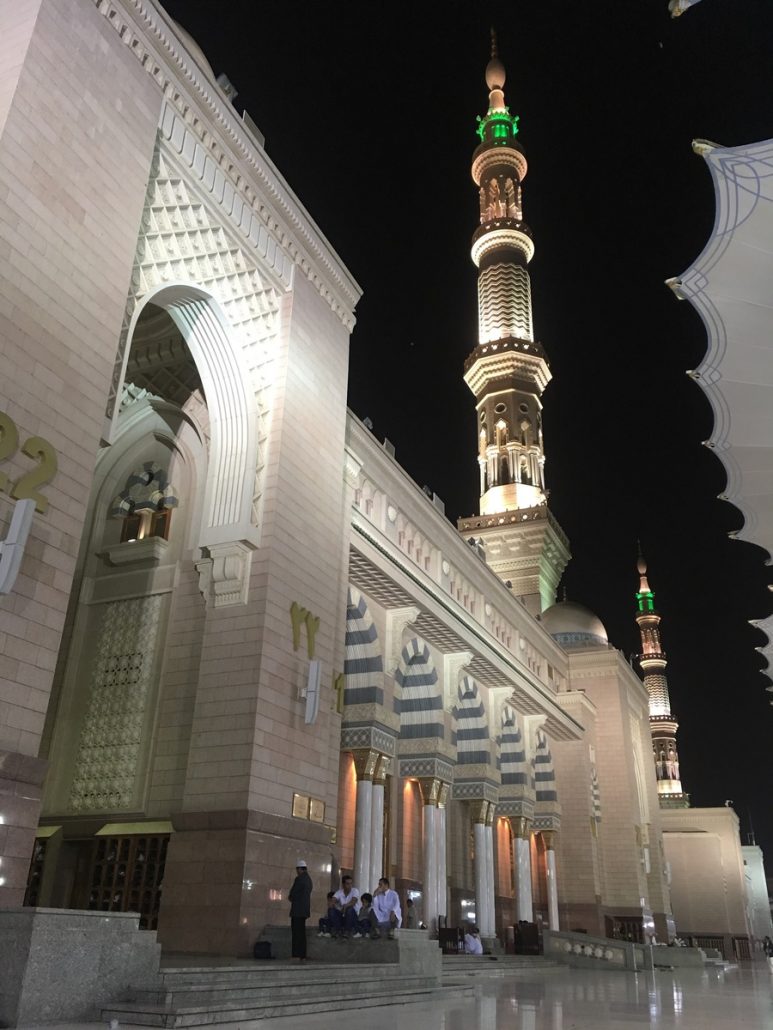
Despite not being the exact centre of the Muslim world (that title goes to Makkah, previously spelled Mecca), Madinah’s historic sites seem somehow more accessible, or perhaps more numerous. I wouldn’t want to to detract from the importance of Makkah, and I do wonder whether in Makkah, everything else seems to fade into relative obscurity because of the supreme importance of the kaaba, the black stone cube towards which all Muslim face during prayer. Its gravity is undeniable, and Makkah is a city of pilgrimage and faith. Madinah, on the other hand, feels like walking through an illustrated history book, or perhaps a museum.
To Muslims, Madinah needs no introduction, but to non-Muslims Madinah might be best described as the Islamic world’s equivalent of Rome, Athens or even the “holy land” described in Christian literature.

At the centre of Madinah is, as I described last week, Masjid al-Nabawi, the Prophet’s Mosque, one of Islam’s first mosques which contains the grave of the Prophet Muhammad ﷺ. Exiting from the mosque, across the large piazza which surrounds it, lies Jannat al-Baqi. This large expanse was chosen during the construction of the Prophet’s Mosque to be one of the first Muslim cemeteries. Over the years many of the direct family of the Prophet Muhammad ﷺ were laid to rest here, including several of his daughters, one of his sons, and his grandson Hassan, his great-grandson Zain al-Abidin and at least two of his descendants.
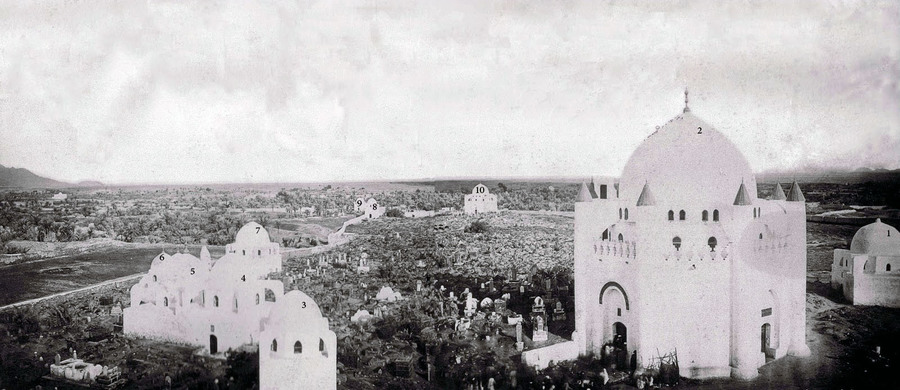
The graveyard’s history has been tumultuous. In 1806 the graveyard was demolished on the command of the Emirate of Diriyah, a forerunner to the current Saudi state. As followers of Wahhabism, a puritanical interpretation of Islam which now informs daily life in Saudi Arabia, the rulers of Diriyah saw the practice of visiting graves as being akin to worshipping the dead; something clearly prohibited in the Qur’an.
To be clear, Muslims are unanimous in their disapproval of worshipping the dead (or their spirits); the question is whether visiting a grave represents an act of worship or not.
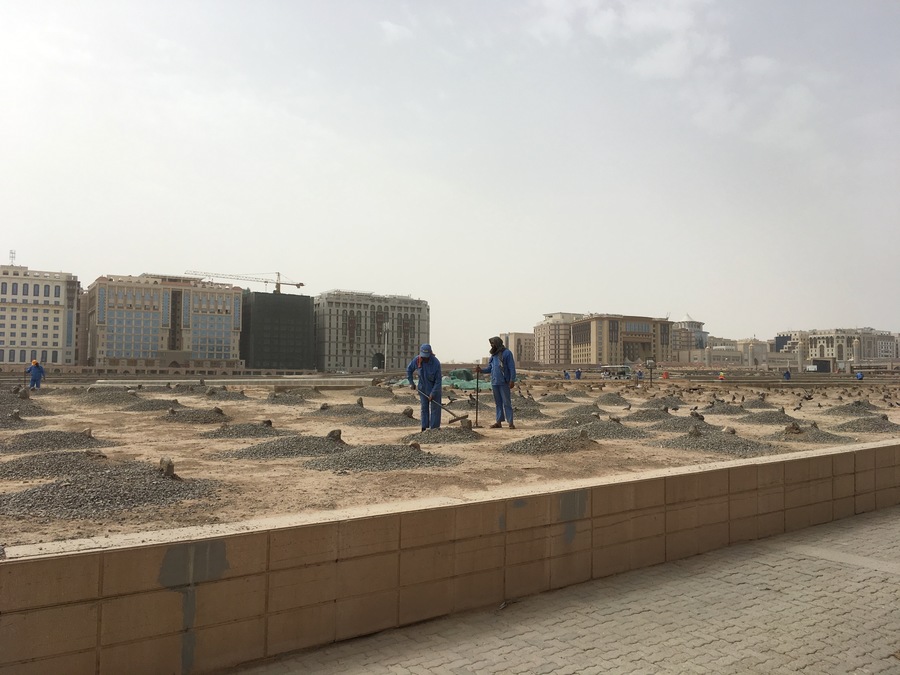
Following the demolition of 1806 the graves were rebuilt, but in 1926 one of the first acts of the newly formed Saudi Arabia was to thoroughly and extensively clear the site, leaving little more than rocks and slight mounds to mark the position of graves. Much of the Muslim world expressed (and continue to express) their shock and dismay at what they consider to be a desecration of the graves, however the ruling authorities of Saudi Arabia have shown no interest in reviving the site.
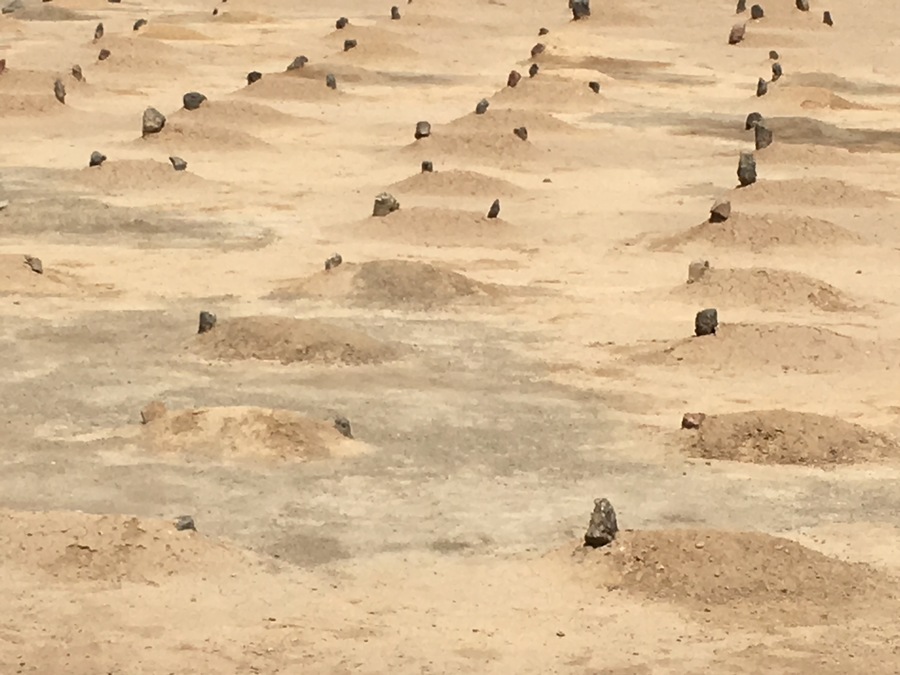
When I visited the site I saw groups of Muslims from south east Asia, the subcontinent, Iran, Turkey and a handful of Arab countries (particularly from the maghreb – northern Africa) reciting a silent prayer for some – or all – of those buried in Jannat al-Baqi. Large signs in various languages – English, Arabic, Urdu, Turkish, Farsi, Hindi, Bengali, French and Malaysian – explain the difference between simply reciting a prayer and grave-worship. Guards nearby ensure that the signs are followed.

Jannat al-Baqi is huge, and its vastness is only accentuated by the absence of any significant structure. Rows after rows of faceless, nameless graves extend from one side of the walled square to the other. I wondered what it would have been like one hundred years ago, when trees shaded the aisles between the tombs, and pride of place at the front of the cemetery stood the grand mausoleum of five of the Prophet’s family; his daughter Fatimah and her descendants.
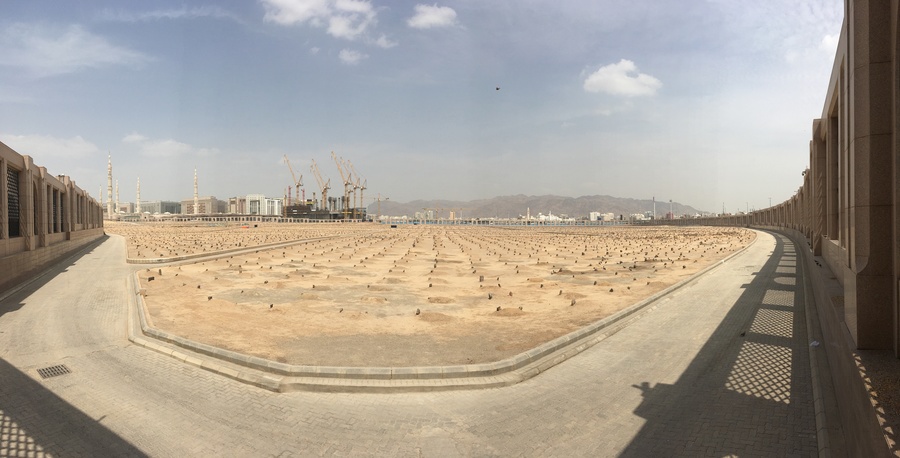
It was time to leave the centre of Madinah and head towards Masjid Quba, or Quba Mosque. While the Prophet’s Mosque was one of the first mosques in Islam, it wasn’t the very first (and nor was it the second). When the Prophet Muhammad ﷺ was exiled from Makkah he apparently took part in the construction of Masjid Quba. Four kilometres to the south of where the Prophet’s Mosque now stands, the mosque was originally made of stone and marks the place where Muhammad ﷺ ended his journey as he arrived in Madinah. The only conjecture about whether Quba was Islam’s first mosque arises from the fact that when the prophet and his followers left Makkah, another group of Muslims escaped to modern day Eritrea and established a mosque in the city of Massawa. It is unclear whether the Eritrean mosque was built before or after Quba, but the much shorter distance from Makkah to Madinah suggests that the exiled party would have reached Madinah first.
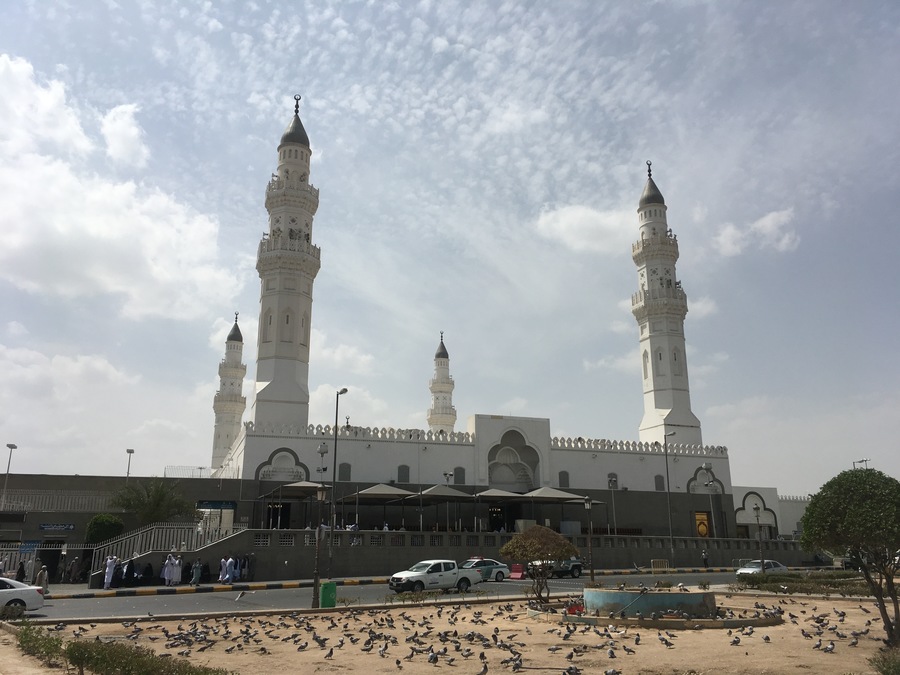
Unfortunately that doesn’t really matter anyway, because in the 1980s the mosque was the subject of a restoration project, but the architect instead decided to demolish the existing structure and design a modern place of worship.

Sad though this history is, the mosque is a pleasant enough place today. Completed in white stone, it has a central open air prayer area shaded by long drapes of fabric which roll gently with the breeze. It is peaceful enough to let the mind wander, and reflect on what would have stood there before the reconstruction, and indeed back in 622 when Muhammad ﷺ arrived at that very spot.
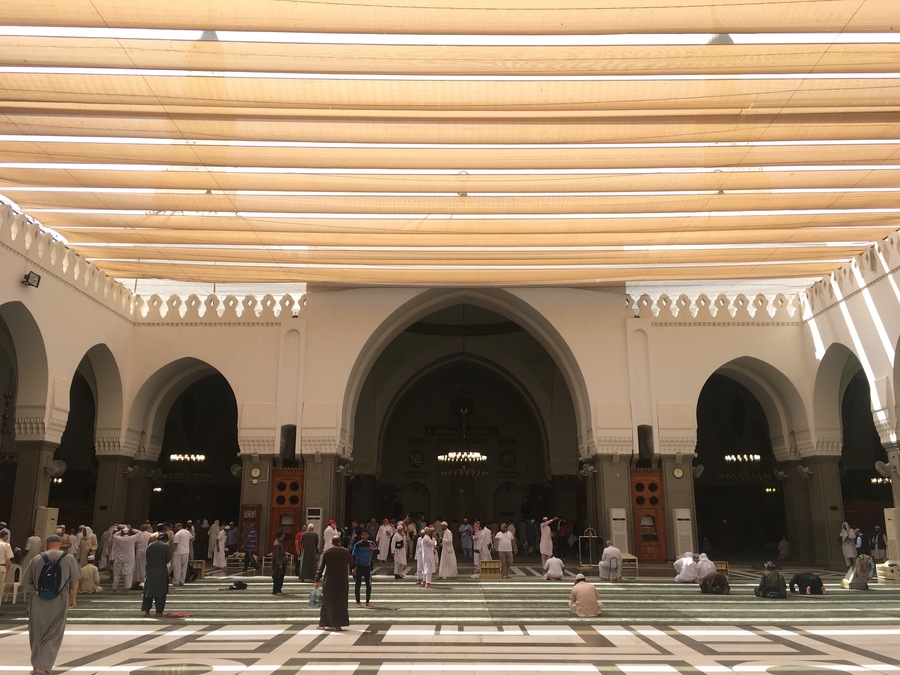
A short bus ride back into the centre, and another out to the city’s northern suburbs and I arrived at Mount Uhud, the mountain where the early Muslim army suffered a major setback – many would say a defeat – at the hands of vengeful Meccans. Four kilometres north of the Prophet’s Mosque, on the slopes of Uhud, is where the army of Muhammad ﷺ lay in wait for the approaching soldiers from Makkah.

When the Meccan army arrived at Uhud, a group of Muslim archers positioned on a mound broke away to plunder their opponents’ camp, despite having strict orders from Muhammad ﷺ not to leave their posts under any circumstances. The move proved fatal, and as the Meccan army surged forward the Muslims were forced to bury their dead on the battlefield and retreat up the slopes of Mount Uhud. At the base of Mount Uhud stands a field littered with the graves of the dead, which like the ground at Jannat al-Baqi, is walled off and marked only with small stones.

The mound where the archers were positioned still remains, and I climbed the hill to get a better view of the site. At 1,077m, Mount Uhud towers above the battlefield, and today a mosque stands just to the east of the graveyard, providing a cool space for reflection and introspection. I made my way to the grand, modern mosque and took refuge in the shade, pondering the significance of the battle. The events at Uhud made for an important spiritual lesson for the Muslim world; similar to Aesop’s fable about the hare and the tortoise, it symbolised the importance of discipline, patience and faith over greed, haste and worldly desires.
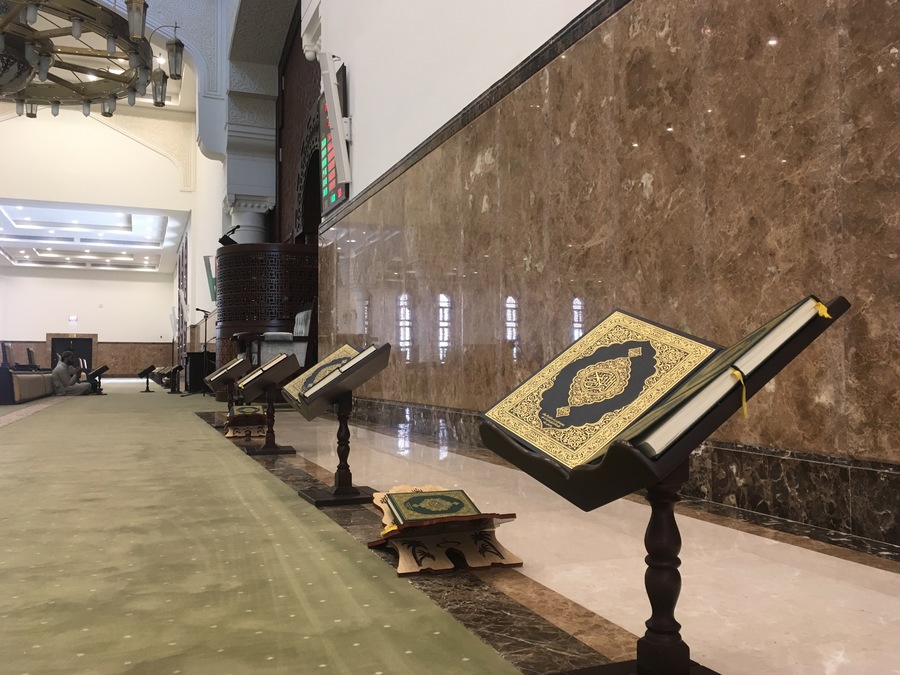
My last stop for the day was at another of Madinah’s important mosques; Masjid al-Qiblatayn, the Mosque of Two Qiblas. The qibla is the direction in which Muslims pray, and in the early days of Islam that direction was towards Jerusalem. When Muhammad ﷺ received the divine revelation that the qibla was in fact towards Makkah (Mecca), the news spread quickly through the city of Madinah. When one of the prophet’s companions arrived at Masjid al-Qiblatayn and found the congregation praying towards Jerusalem, he announced the revelation to the gathering. Mid-prayer, the entire congregation turned 180 degrees to face Makkah and completed their worship.
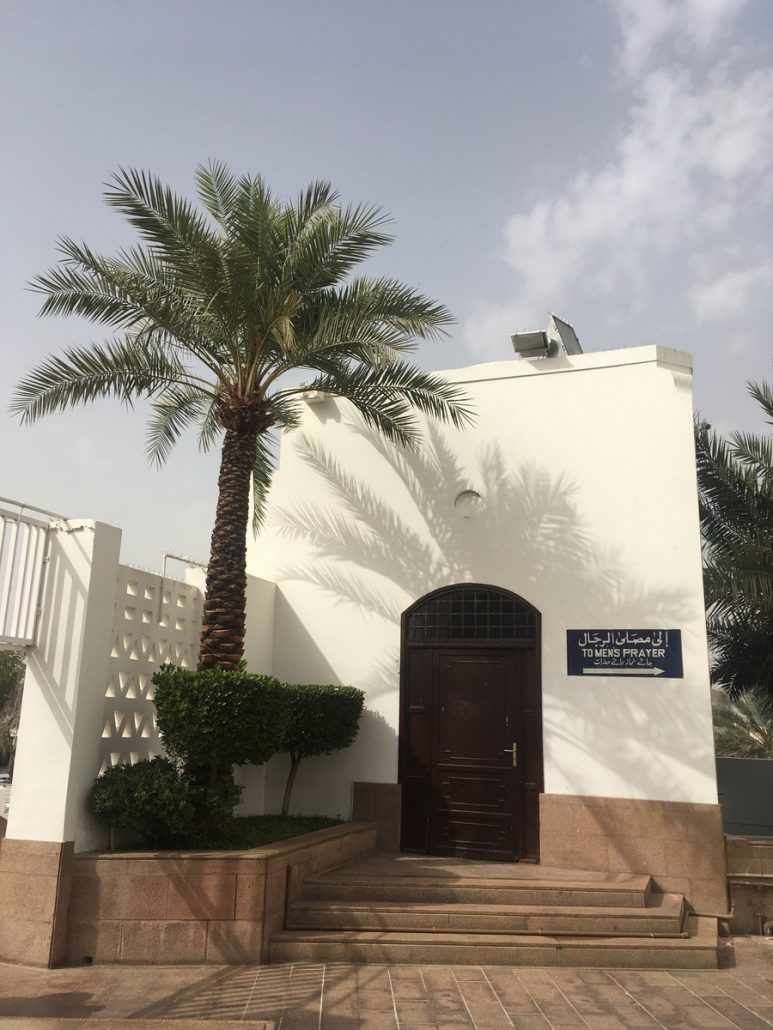
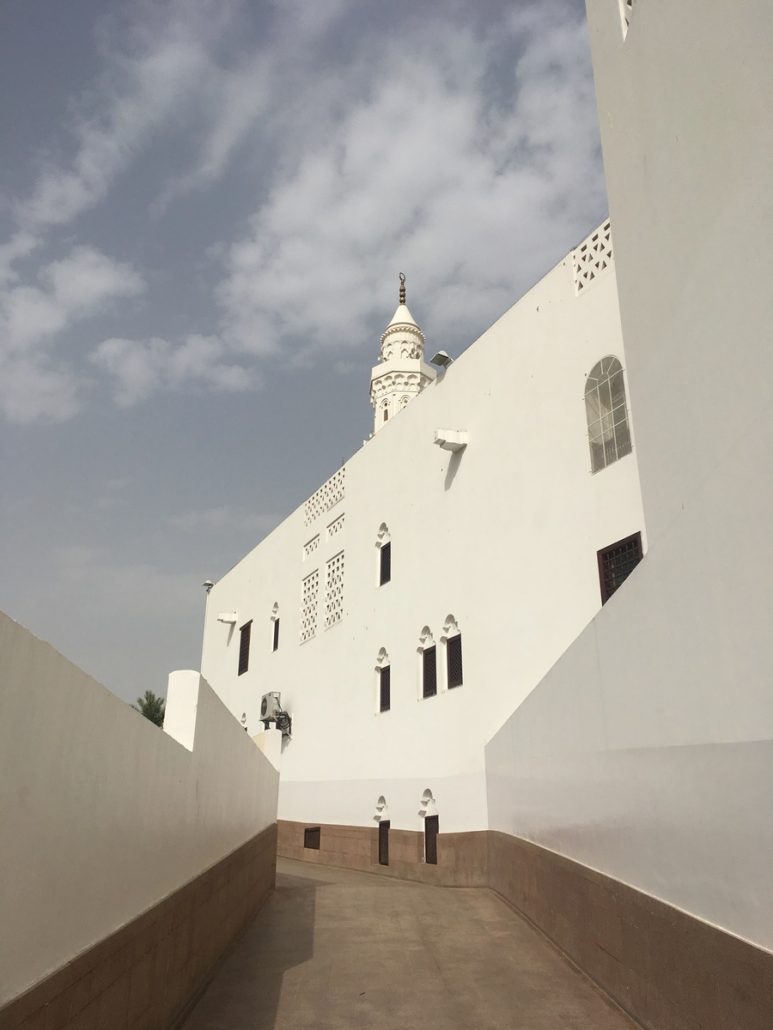
Nowadays, the mosque retains its two mihrabs (prayer niches) indicating the two directions, although the Jerusalem-facing one has been mostly minimised and is marked only by a stone placed high up on the wall. The mosque is pure white stone, covered in pretty, delicate Islamic motifs, and surrounded by palm trees. The interior was cool and breezy and entirely enclosed with a heavy, dark ceiling.
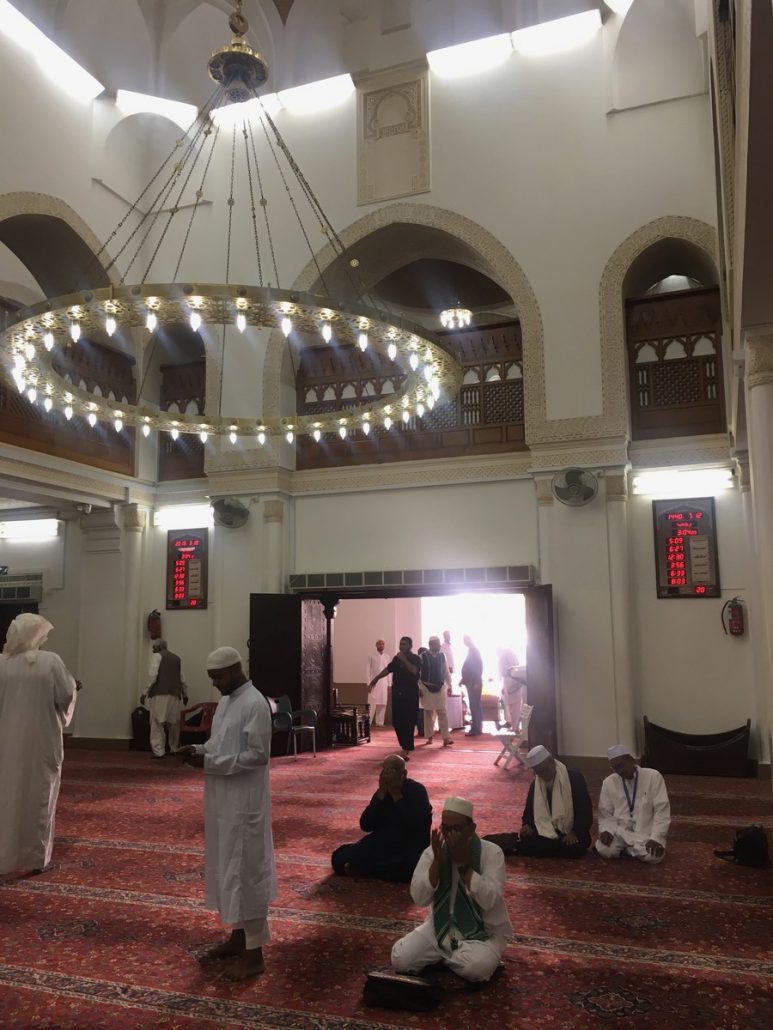
As I walked through the door I was faced by a group of travellers snapping photographs and craning their necks upwards; the original mihrab is placed high above the entrance to mark the direction of Jerusalem. Directly in front of me was the contemporary mihrab, denoting the direction of Makkah and hence the qibla towards which Muslims pray. Today’s congregation were, of course, facing towards Makkah as they prayed in this highly symbolic and historic mosque.
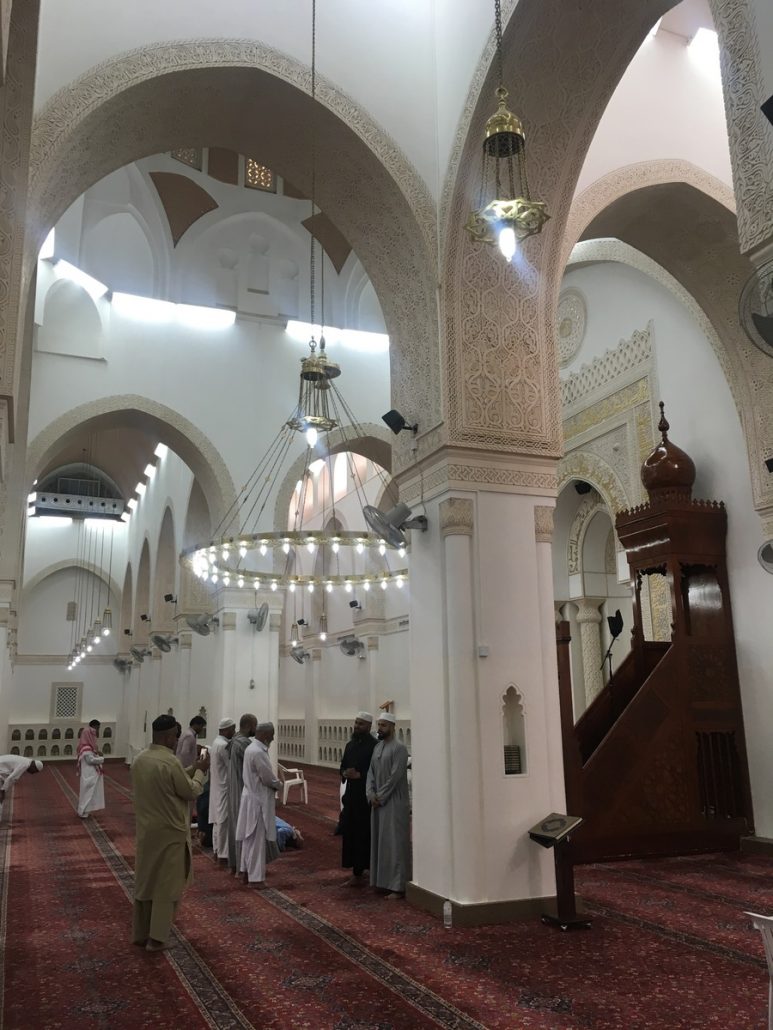
Having experienced the historic sites of Madinah, it was now time to begin my journey in the direction of the qibla, towards Makkah, to undertake a pilgrimage for which I had been waiting and dreaming a long, long time.
In my next post I’ll be tracking my umrah, a pilgrimage to Makkah which many Muslims perform, and which simply left me speechless.




Hi Tim.
Wow! You made the history lessons from school come alive with your writings and pictures! Reading your prose made me feel as if I’m on the journey as well.
May you be blessed with a long life, safe travels and a contended heart.
Thank you so much Anu, I’m glad you enjoyed it 🙂 And likewise for you too 🙂
AoA. So Tim you’re a Muslim? Otherwise how could you perform Umrah?
You are one smart cookie! 😉
وعن أبي الهياج حيان بن حصين قال: قال لي علي بن أبي طالب رضي الله عنه: ألا أبعثك على ما بعثني عليه رسول الله صلى الله عليه وسلم ؟ أن لا تدع صورة إلا طمستها، ولا قبرًا مشرفًا إلا سويته. ((رواه مسلم)).
I Ali bin Abu Talib (May Allah be pleased with him) said to me: “Shall I not send you to do a task that the Messenger of Allah (ﷺ) had assigned to me? Spare no portrait unwiped out, and leave not a high grave unlevelled.”
[Muslim].
: Book 18, Hadith 177
The Saudis have done the right thing even if most Muslims thought they don’t
ۗ قُلْ هَلْ يَسْتَوِي الَّذِينَ يَعْلَمُونَ وَالَّذِينَ لَا يَعْلَمُونَ ۗ إِنَّمَا يَتَذَكَّرُ أُولُو الْأَلْبَابِ
Say, “Are those who know equal to those who do not know?” Only they will remember [who are] people of understanding.
Quran 39 9
Nice to learn so much about Madinah. Interesting place, interesting history! I feel so fascinated by such places that exude so much of culture and have an mystical aura.
Thanks Renuka! Visiting Madinah really was like a dream come true 🙂
Tim
Congratulations! What a remarkable and refreshing take on one’s journey to Makkah and Madinah. Alhamdulillah, I pray that Allah, the most High grants you an easy passage to your next destination and may all your hearty duas (prayers) be granted. If you are still there please ask Allah to send me an invitation soon, how my heart yearns to step foot in His and his beloveds sanctuary. Keep writing and we will keep reading god willing. Salaam (peace) 🙂
Thank you for reading! Wasalam 🙂